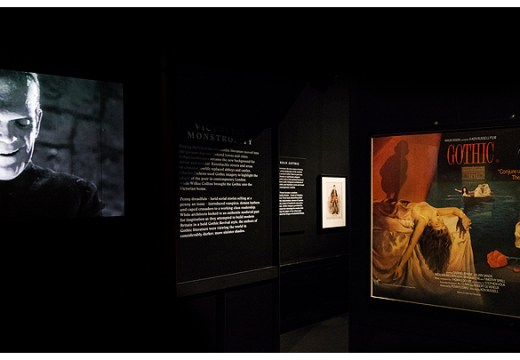Recalling the effect of reading Pugin in his youth, George Gilbert Scott (1811–78) recounted that ‘every aspiration of my heart had become medieval’. Paradoxically, however, for the architect renowned as the most prolific progenitor of the 19th-century Gothic Revival, Scott insisted, ‘I am no medievalist. I do not advocate the styles of the middle ages as such.’ Just as it was gothic spirit rather than style that Ruskin promoted, Scott esteemed gothic not for its forms but for its flexibility. Gothic was ‘comprehensive and practical’, but he still yearned for ‘a distinctive architecture of our own day’ rather than one resurrected from the past.
Gavin Stamp’s illustrated biography points to a number of paradoxes regarding Scott: the gothic revivalist who was not a medievalist; the incessant restorer who lectured against restoration; and the author of the earliest architect’s autobiography who is still – despite Stamp’s erudite and engaging survey – yet to find a modern biographer on the scale that his career warrants.
Scott poses an archival challenge as, after his death, his second son John Oldrid Scott disposed of the majority of his papers. This makes an illustrated biography – in which every major secular building by Scott (and a selection of his numerous churches) is shown – an especially suitable form. The book is structured in two halves: the first a substantial essay on Scott’s reputation and biography; the second a series of captioned images addressing building types: workhouses, churches, cathedrals, monuments, and all manner of public, domestic, educational and commercial buildings. The genre also demands that the reader become a viewer, and follow in the footsteps of John Betjeman, who admitted that he initially found Scott ‘a rather dull architect, but the more I have looked at his work the more I have seen his merits’.
The book’s title, Gothic for the Steam Age, refers primarily to Scott’s application of medieval modes to multiple modern needs, but also resonates with the fact that his extensive practice was facilitated by the national rail network that permitted him to use his journey time for writing books. This, combined with his irrepressible energy, meant that Scott was extraordinarily productive, perhaps too productive: estimates vary between 732 buildings and 879 projects. He worked in almost every county, designed every sort of building, and was employed on the restoration of almost every medieval cathedral in the land.
The corollary was that Scott could not be closely involved in every job. Anecdotes include how he failed to recognise one of his own churches and began to redirect the clerk of works at one of G.E. Street’s projects, having mistaken it for his own. As Stamp points out, however, Scott must have been running the largest architectural office in the country, if not in Europe. He rightly argues that Scott deserves to be evaluated on the merits of the buildings he was closely involved with, among them the Foreign Office (approved in 1861), the Nikolaikirche in Hamburg (consecrated in 1863, bombed in 1943 and demolished apart from the tower in 1951), the Albert Memorial (1864–72) and the Midland Grand Hotel (1868–76).
Stamp charts the rollercoaster of Scott’s critical fortunes – from his quasi-state funeral and burial in Westminster Abbey, to the early 20th-century identification of his buildings as the epitome of Victorian excess. It was only in the 1950s when voices such as Betjeman’s began to speak in their favour. It is hard to imagine now, when the Albert Memorial glitters resplendent in the South Kensington sunshine, that as recently as 1993 it was on English Heritage’s ‘at risk’ register, having been neglected by Thatcher’s government and saved thanks to the efforts of campaigners led by the Victorian Society, which cut its teeth defending the Foreign Office and the Midland Grand Hotel against demolition.
It is on the question of architectural restoration that Scott’s reputation is particularly vexed. According to William Morris, who later referred to Scott as ‘that (happily) dead dog’, Scott’s restoration work at Tewkesbury led directly to the foundation of the Society for the Protection of Ancient Buildings (SPAB) and fuelled the ‘anti-scrape’ movement. It was also during Scott’s RIBA presidency that Ruskin spurned the Gold Medal in protest. Scott was certainly not without fault; he was undoubtedly over-zealous with the removal of later classical fittings in medieval cathedrals. But he learned quickly from his youthful error of removing St Mary’s Chapel on Wakefield’s medieval bridge and completely rebuilding it (the original became a boathouse façade at Kettlethorpe Hall). ‘I never repented it but once,’ he said, ‘and that has been ever since.’ For those who would question Scott’s self-identification as a ‘conservative’ rather than a ‘destructive’ restorer, Stamp advises that he saved many a building from falling down and the work – which would have been carried out anyway – could only have been executed by less sensitive souls than Scott.
By the 1870s when his health was failing, Scott was sceptical about the possibility of ‘another great period in architecture’, but in addition to the legacy of his pupils – Street, Bodley, and Butterfield – Scott left an architectural dynasty, his most famous descendant being Giles Gilbert Scott. Perhaps in the abstracted lines of the Battersea and Bankside power stations and the economical dome of the K2 phone box, Giles Gilbert moved closer to the elusive modern idiom for which even his grandfather would have given up gothic. George Gilbert Scott was not an innovator, but as Stamp provocatively points out: ‘…good architecture is not necessarily original. Nor should it be: too much architectural history has concentrated on the innovative rather than on the accomplished – and beautiful.’ Contemporary architects, critics, and historians, take note.
Gothic for the Steam Age: An Illustrated Biography of George Gilbert Scott by Gavin Stamp is published by Aurum Press (£30).
Lead image: used under Creative Commons licence (CC BY-SA 3.0)














![Masterpiece [Re]discovery 2022. Photo: Ben Fisher Photography, courtesy of Masterpiece London](http://zephr.apollo-magazine.com/wp-content/uploads/2022/07/MPL2022_4263.jpg)
Suzanne Valadon’s shifting gaze